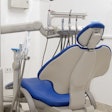
For your day-to-day operations and those times when you're bringing in another doctor as an associate or temporary staff to cover vacations, your patients deserve to have minimum standards that are consistent within your organization.
 Jen Butler, MEd.
Jen Butler, MEd.When there is a lack of minimum standards, chaos grows for patients as they are diagnosed by one doctor and then downgraded by another. This leaves the practice sending mixed messages to patients and discrediting themselves as providers.
Establishing your own clinical commandments, which are nonnegotiable and followed by all staff, provides repeatability and consistency for teams and patients.
It also provides a baseline for clinical conversations among providers, list items for clinical chart audits, and clinical guidelines for providers.
What's on your list?
Here are a few examples and why they just might be part of your clinical commandments.
1. Hygiene preappointments
“You can increase your active-patient count within 18 months by making sure your team preappoints patients.”
I advise my clients to preappoint a patient's hygiene appointment 100% of the time. In my experience, this is the No. 1 way to build a practice's patient business.
It doesn't matter how many new patients you have coming in your front door if your back door is wide open and they don't return. You can increase your active-patient count within 18 months by making sure your team preappoints patients.
2. When is it a crown?
It's a crown if two-thirds of the tooth is compromised, according to the ADA. Too often doctors will place large composites in place of a crown simply because they can. Or they want to appease a financially strapped patient.
Regardless of the reason, it's an inferior restoration with a short-term solution, which is why I recommend this become one of your clinical commandments.
3. Replacing, not extracting
Don't talk about extracting teeth. Talk about replacing teeth. When you focus on replacing teeth, extracting the nonrestorable tooth is part of the process while giving the patient a far better result, which is why this should be a clinical commandment.
4. Follow-up
No patient will leave saying "no" to the money, only to the provider. When I ask clients to explain the common objections patients give for not accepting treatment, they can't give me a response.
The doctor can't answer this question because they don't know the reason the patient refused treatment. The patient gives the objection to the treatment coordinator, who doesn't know how to overcome the objection, and then the doctor never follows up.
Action items
You can create as many commandments as you want, but the trick is to get everyone on the same page. I give my clients the following to-do list:
- Schedule a 30-minute team meeting and make enough copies for everyone.
- Read each commandment to your staff and share with them why it made your list.
- Go through consequences if the team doesn't follow the commandments.
- Pass around an employee commitment sheet and have each sign it, acknowledging they accept each commandment and will follow thoroughly.
- Create a time every week to validate that each commandment is being followed.
Jen Butler, MEd, is the CEO and founder of JB Partners and has been working in the area of stress management and resiliency training for more than 25 years. Learn about her services at www.jenbutlerpartners.com, or contact her at [email protected].
The comments and observations expressed herein do not necessarily reflect the opinions of DrBicuspid.com, nor should they be construed as an endorsement or admonishment of any particular idea, vendor, or organization.



















